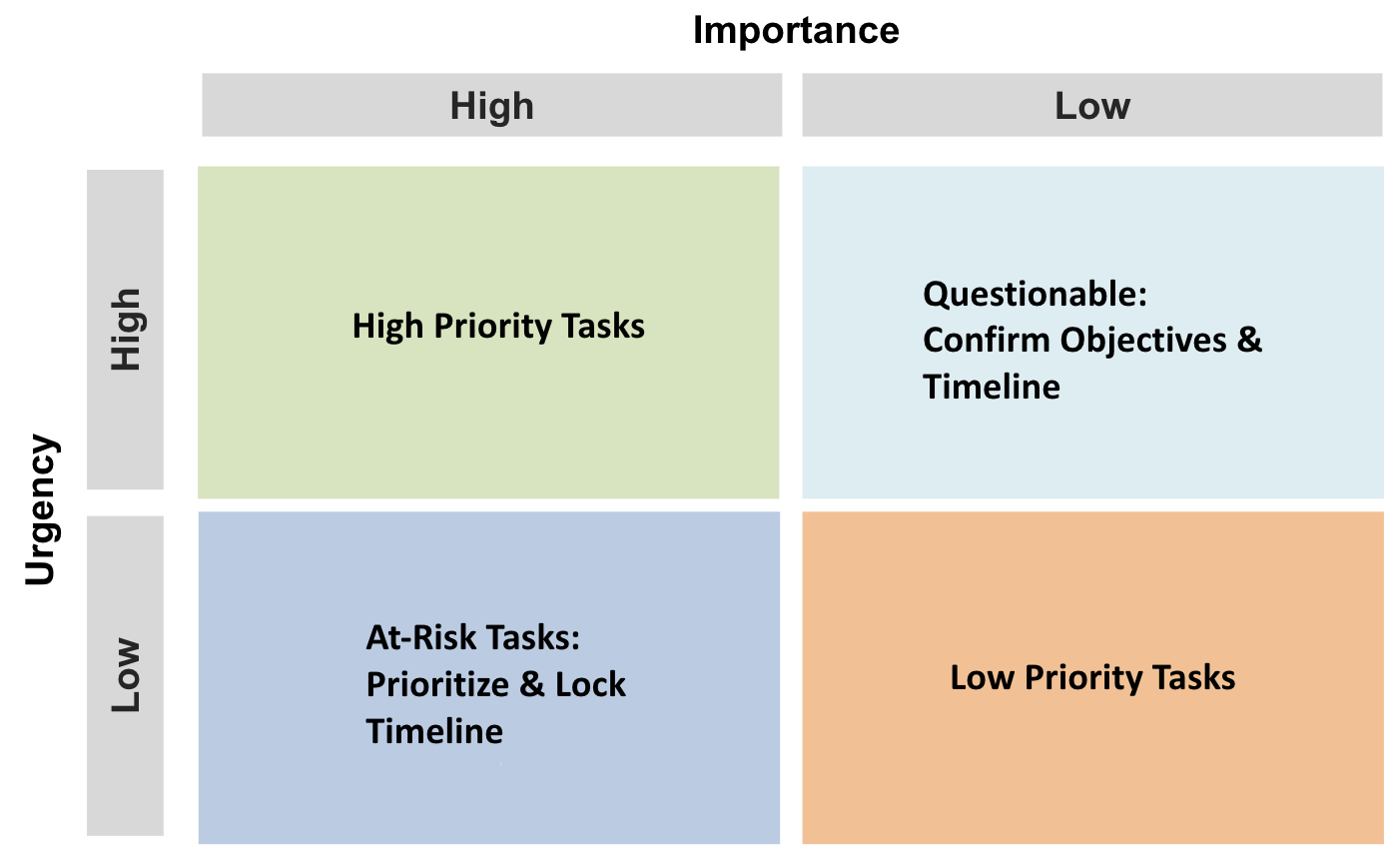How to prioritize anything with the Urgency/Importance Matrix
Working in an FP&A team, we have to keep multiple balls in the air at most times.
We are responsible for reconciling variances between actuals and forecast, building models to support significant decisions - and throughout all that answer questions from our cross-functional business partners on various subjects.
It’s no surprise that our days can get hectic. So we mustn’t simply prioritize tasks according to who “makes the most noise”.
We need a system.
The Urgency/Importance Matrix is a great tool to keep your priorities in order.
Take a look a the image above.
High Urgency & High Importance
Those tasks have the highest priority. For example, it may be a request from your CFO or an upcoming month-end close deadline.
There are typically no surprises here. You don’t have to think much about which tasks are high in importance and urgency.
The same applies to:
Low Urgency & Low Importance
You are obviously not going to put these at the top of your to-do list. Instead, you should consider eliminating, delegating, or automating these tasks.
High Urgency & Low Importance
Here is where it starts to get interesting. Sometimes, tasks you think need to be a top priority because they appear urgent shouldn’t be.
If you suspect you are dealing with an urgent but not important task, you need to do two checks:
Confirm you understand the objective. The request may be necessary because it impacts a part of the process you don’t have visibility of.
Challenge the timeline. Most people know that to get anything done, you need a deadline. So sometimes, people make it up just to give you one. So, if you have to deprioritize a task because of low importance, always ask why you need to deliver it by a specific date.
Low Urgency & High Importance
These tasks are being neglected most frequently. And people pay the price for it. Typical tasks in this category are skill development, automating reports, offering support to business partners, and working against long-term goals.
This is what resonated most with me when I first learned about the Urgency/Importance matrix:
We need to ruthlessly prioritize the tasks that are important but not urgent.
How can we do that?
Commit to getting them done by including them in your team’s goals.
Share the goals with your boss and business partners.
Set your deadlines and stick to them.
If you’d like to learn more about FP&A, I offer help in three ways:
1️⃣ Subscribe to my free newsletter “FP&A Tuesday” here.
2️⃣ Listen to 75 bite-sized mini lessons and get FP&A advice on the go.
3️⃣ Join my live online course FP&A Bootcamp to master FP&A in two weeks.

